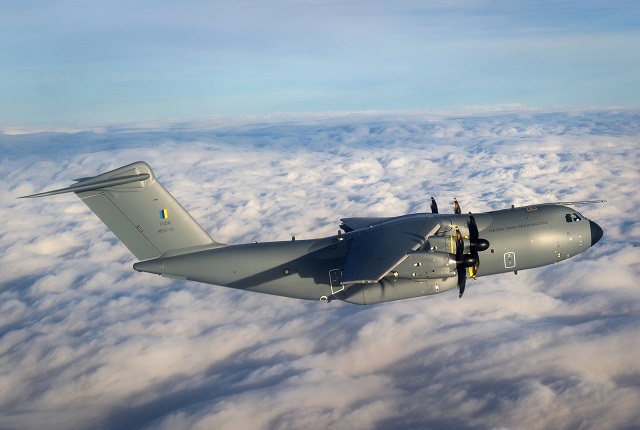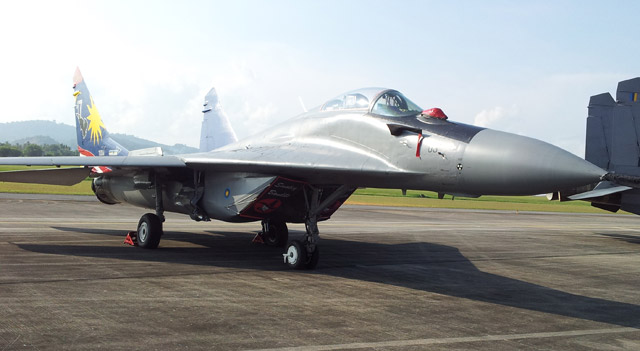Langkawi is an idyllic location for an air show, but its sunny skies aren’t likely to shed much light on Kuala Lumpur’s procurement agenda.
The two years since the last instalment of the biennial Langkawi International Maritime & Aerospace (LIMA) exhibition have been eventful for the Royal Malaysian Air Force. The show falls just after the first anniversary of the disappearance of Malaysia Airlines flight MH370, a Boeing 777-200ER that mysteriously diverted to the far reaches of the Indian Ocean while operating the Kuala Lumpur-Beijing route on 8 March 2014.
Malaysia's air force was active in the first week of the search, when the aircraft was mistakenly presumed to be in the Gulf of Thailand or Strait of Malacca. It later sent Lockheed Martin C-130Hs to Perth in Western Australia, where they participated in the ultimately futile search for the missing aircraft. The service also played a crucial humanitarian support role during floods that swept the northern part of peninsular Malaysia in the last weeks of 2014.
Despite these major events putting Malaysian airpower in the spotlight, all indications suggest Kuala Lumpur is no closer to making decisions about major equipment purchases – especially around its ageing fighter fleet and for another glaring capability gap, a long-range maritime patrol aircraft (MPA).
That is not to say this year’s LIMA will be absent of signs of progress. Barring unforeseen contingencies, the show is set to see the debut of Malaysia’s first Airbus A400M tactical transport. On 30 January, the nation’s first example conducted its maiden flight: a 90min sortie from Seville, Spain.
The first of four “Atlas” airlifters on order for the air force, aircraft MSN22, is also the 16th production example of the A400M, from a 174-unit order book for eight nations. Airbus has previously outlined a schedule to deliver Kuala Lumpur’s lead example by the end of the first quarter of this year, with the aircraft to be operated by the air force’s 22 Sqn. The show website indicates that the aircraft will participate in the flying display at the show.

Airbus
The new type will give a major boost to the air force's airlift capability, which comprises 14 Lockheed C-130H Hercules and eight Indonesian Aerospace-produced Airbus CN235s. Flightglobal’s Ascend Fleets database shows that the average age of the C-130H fleet is 31 years, with the first examples delivered in 1976, and the last in 1993. Ascend shows that the average age of the CN235s is 15 years.
The A400M, with its superior speed and range, is well suited for operations across the South China Sea between peninsular Malaysia and the provinces of Sabah and Sarawak, which share the island of Borneo with Indonesia and Brunei. The new type’s air-to-air refuelling capability could also prove useful, given Malaysia's lack of dedicated tanker aircraft.
Making a second appearance at a LIMA show will be the country’s new Airbus Helicopters EC725, all 12 of which have now been delivered. The type serves a number of missions, including utility and combat search and rescue. The EC725s were among the first assets deployed in the search for MH370 last year, and in recent flooding they played a high profile role, delivering humanitarian support.
Apart from the bright spots of the A400M and EC725, Kuala Lumpur is making little, or no, headway in other key areas, namely fighters, maritime patrol and airborne early warning and control (AEW&C).
A long-time observer of the Malaysian military says the country’s small, professionally run military is mainly comprised of volunteers. It knows exactly what equipment it needs and the types of missions it will be called on to perform. The challenges, as in so many countries, are funding and political support.
Reports of persistent political infighting suggest that prime minister Najib Razak’s immediate agenda has little space for defence procurement. Moreover, as oil is a major driver of Malaysia’s budget, the recent collapse of the oil price will dent Kuala Lumpur’s revenue. New military aircraft may not be seen as a high priority.
The observer points out that Malaysia’s overall defence budget for 2015 was M$17.7 billion ($4.9 billion). Of this amount, approximately M$3.6 billion is earmarked for “development expenditure”. These funds, amounting to about $1 billion, will be divided between the A400M programme, the ongoing acquisition of the army’s new AV8 armoured vehicle, as well as the building of the navy’s first of six second-generation patrol vessels (SGPV); essentially a small frigate that is being produced indigenously.
“The defence budget is already quite low, and the air force must compete with the army and navy for funding,” the source says. “There is little money for long-term plans." Singapore’s 2014 defence budget of S$12.2 billion ($9.8 billion) is far higher, and the city state is considerably more professional in how it allocates funds, he adds.
“Malaysia also has a tendency to wait for the best deal. They make decisions based on price and offsets, not necessarily what’s best for the air force.”

Greg Waldron/Flightglobal
The longest running – and highest profile – air force challenge is the replacement of its 10 1990s-vintage RAC MiG-29s through the multirole combat aircraft (MRCA) programme for 18 new fighters. Although the ageing type appeared at the Singapore air show in February 2014, no MiGs are scheduled for the LIMA static line or flying display. Due to be retired at the end of 2015, there are significant questions about the serviceability of the MiG-29 fleet. But despite the apparent irrelevance of these aircraft, virtually no progress is being made on the MRCA procurement.
Still, major fighter makers will again trek to LIMA, despite the clear challenge of selling advanced aircraft to Malaysia’s cash-strapped military. Fickle budgets at home and tight production runs all but guarantee their interest in MRCA. The 2011 and 2013 shows were a delight for fighter lovers, with Boeing’s F/A-18E/F Super Hornet, Dassault's Rafale, Saab’s Gripen and the Eurofighter Typhoon putting on impressive aerial displays. All of the competitors are willing to offer lucrative offsets to win the deal. Except for the Typhoon, all of the fighters will be back at this year's show.
In addition, despite its long coast line, Malaysia’s military has made little progress since the last LIMA in setting the stage for an MPA force beyond the four Beechcraft King Air 200s its air force presently operates. This is despite a speech by then-defence minister Ahmad Zahid Hamidi in 2013 saying that maritime patrol would be afforded a high priority in the future.
His speech followed the early 2013 incursion by 200 Filipino gunmen in Malaysia's eastern state of Sabah, which resulted in an armed confrontation with Malaysian military forces. Although Kuala Lumpur eventually defeated the interlopers with artillery, air strikes and ground forces, the incident highlighted the vulnerability of Malaysia's long coastlines.
Nonetheless, Malaysia is not believed to have issued a formal request for information about MPA aircraft. An expert on the Malaysian military says that the search for MH370 is seen as a one-off event, and therefore has had no influence on the MPA question.
Similarly, Malaysia’s long-running hopes of buying four AEW&C aircraft also appear to be on indefinite hold. The high cost of obtaining and operating such a fleet is a major stumbling block for this capability. In 2013 Northrop Grumman created a modest stir at LIMA when it rented a stand to highlight the capabilities of its E-2D Advanced Hawkeye. Since then it appears to have backed down a bit. While the company will send representatives to LIMA this year, it has no plans for a stand.
Among other platforms, Malaysia is to boost its ability to combat future militant incursions by arming its AgustaWestland AW109s and transferring upgraded Sikorsky S-61 “Nuri” utility helicopters to army aviation control – moves prompted by the Sabah incursion. Kuala Lumpur has already outfitted three S-61s with 12.7mm door guns to provide armed support for ground troops.
Malaysia had previously planned to remove its aged Nuri fleet from use by 2012 – 89 personnel have been killed in 15 crashes involving the type since it was introduced. However, the acquisition of just 12 EC725s, as opposed to the originally planned 28, means that the Nuris will soldier on. A package of S-61 upgrades, to be conducted locally by maintenance, repair and overhaul firm Airod, will see the type receive important enhancements. A night vision goggle-compatible glass cockpit upgrade has already been performed on part of the fleet. A wider project to enhance the type’s performance and safety is also being studied.
Last year, Kuala Lumpur also signed a letter of acceptance with Airod about a long-delayed cockpit upgrade for Malaysia’s C-130 fleet. This will see the ageing transports receive modern glass cockpits, improved avionics and up-to-date navigation systems.
Although LIMA will offer a glimpse of the future of Malaysian airpower, May’s release of the government’s 11th Malaysia plan could give far more clarity about defence funding priorities in the five years to 2020.
The plan will touch on all aspects of Malaysia’s economy, however, and in all likelihood defence will receive only a modest mention. That said, the nation's navy has requested that funding for six shipborne anti-submarine warfare helicopters be included. The plan will also be scrutinised for details about other requirements, such as MRCA, maritime patrol and AEW&C.
Source: Flight International
















